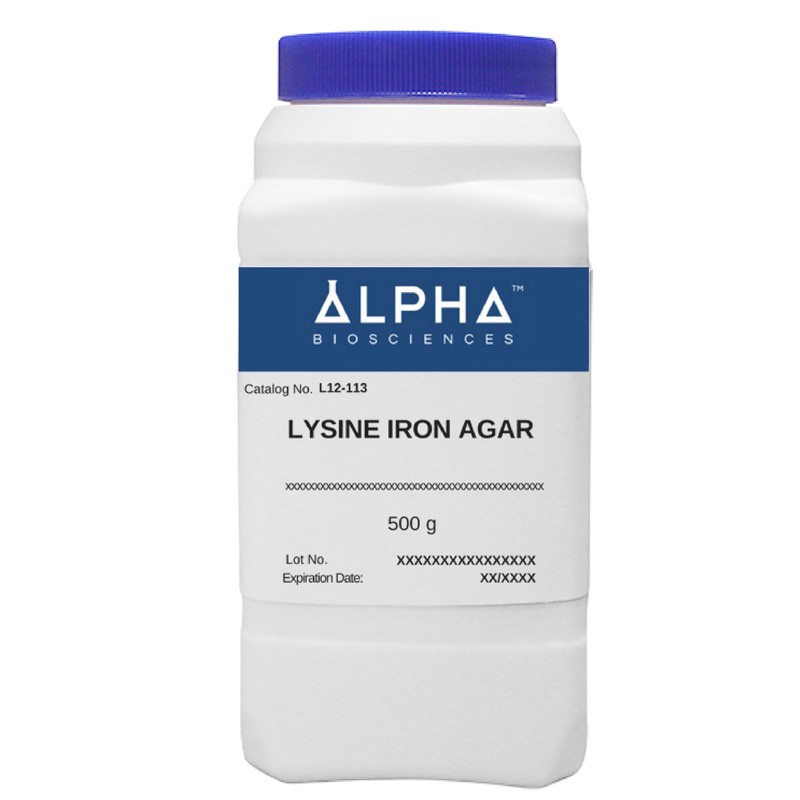- +Products
- +Allergen testing
- +Culture Media - reagents and reference material
- +Environmental testing solutions
- +Laboratory Consumables
- +Laboratory equipment
- +Microbiology equipment
- +Neogen® Food Safety Solutions
- +Temperature & Humidity Monitoring
- Services
- Support
- News
- +About Us
- Contact

Lysine Iron Agar
Lysine Iron Agar is used for differentiating microorganisms based on lysine decarboxylation/deamination and the production of hydrogen sulfide. Edwards and Fife developed Lysine Iron Agar to detect Salmonella arizonae.
Since Salmonella arizonae ferments lactose rapidly, it was found that hydrogen sulfide production on Triple Sugar Iron agar was suppressed. By eliminating lactose and using lysine, this medium differentiates enteric bacilli based on their ability to decarboxylate or deaminate lysine.
In compliance with regulatory requirements, a USDA permit (VS 16-3) is mandatory for shipments from Canada to the USA due to the inclusion of peptone, an animal byproduct.
Lysine Iron Agar is used for differentiating microorganisms based on L-Lysine decarboxylation/deamination and the production of hydrogen sulfide. Edwards and Fife developed Lysine Iron Agar to detect Salmonella arizonae. Since this species ferments Lactose rapidly, it was found that hydrogen sulfide production on Triple Sugar Iron Agar was suppressed.
By eliminating Lactose and using L-Lysine, this medium differentiates enteric bacilli based on their ability to decarboxylate or deaminate this amino acid. Sodium Thiosulfate and Ferric Ammonium Citrate reveal the production of hydrogen disulfide by forming a black precipitate. Bromocresol Purple serves as pH indicator.
Organisms that decarboxylate L-Lysine, such as Salmonella spp., produce the alkaline compound cadaverine and the slant remains purple, while those deaminating it, such as Proteus spp., convert this amino acid to α-ketocarboxylic acid and produce a color shift to red.
Download



